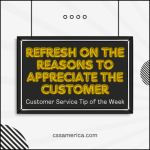
The assumption that we can make about an organization when we hear that there are “communication issues” is that there is a lack of communication. Management did not tell staff about changes. Certain departments are not communicating with other departments about what’s going on with customers. Co-workers are not communicating with each other about basic scheduling or day-to-day operational points.
And while the assumption that communication issues relate to a lack of communication is usually true, in many organizations the bigger issue with communications is the lag in communications.
The staff find out about policy or procedural changes, but the time they find out is when they’re given notice that they need to implement those changes. Without input into the decision to make the change or how the change would be implemented, and without knowing why the change is instituted, the employees are left with the responsibility of implementing something in a very short period of time without the benefit of planning it into their work schedule.
Sometimes the marketing department is rolling out some new messaging to their clients and prospective clients, and they share that information with the customer service area. But unfortunately they share that with the customer service area at the same time that they launch the messaging to the customers directly.
Employees schedule days off weeks in advance, or they take breaks. Although they do tell their co-worker, sometimes they tell them that they’re going to be off on Friday when it’s Thursday evening. Sometimes they mention that they’re taking a break as they are walking out the door.
The point is that it’s not only important to communicate, but it’s also important to think about the timeliness of communication and the impact of the timeliness on others. When you’re evaluating whether or not to share information with others, strongly also consider how soon you can convey that information.
Bring co-workers into the loop earlier to eliminate the lag in communications.
Signup for FREE Tips! Contact Us More Resources for You Visit Our Home Page























